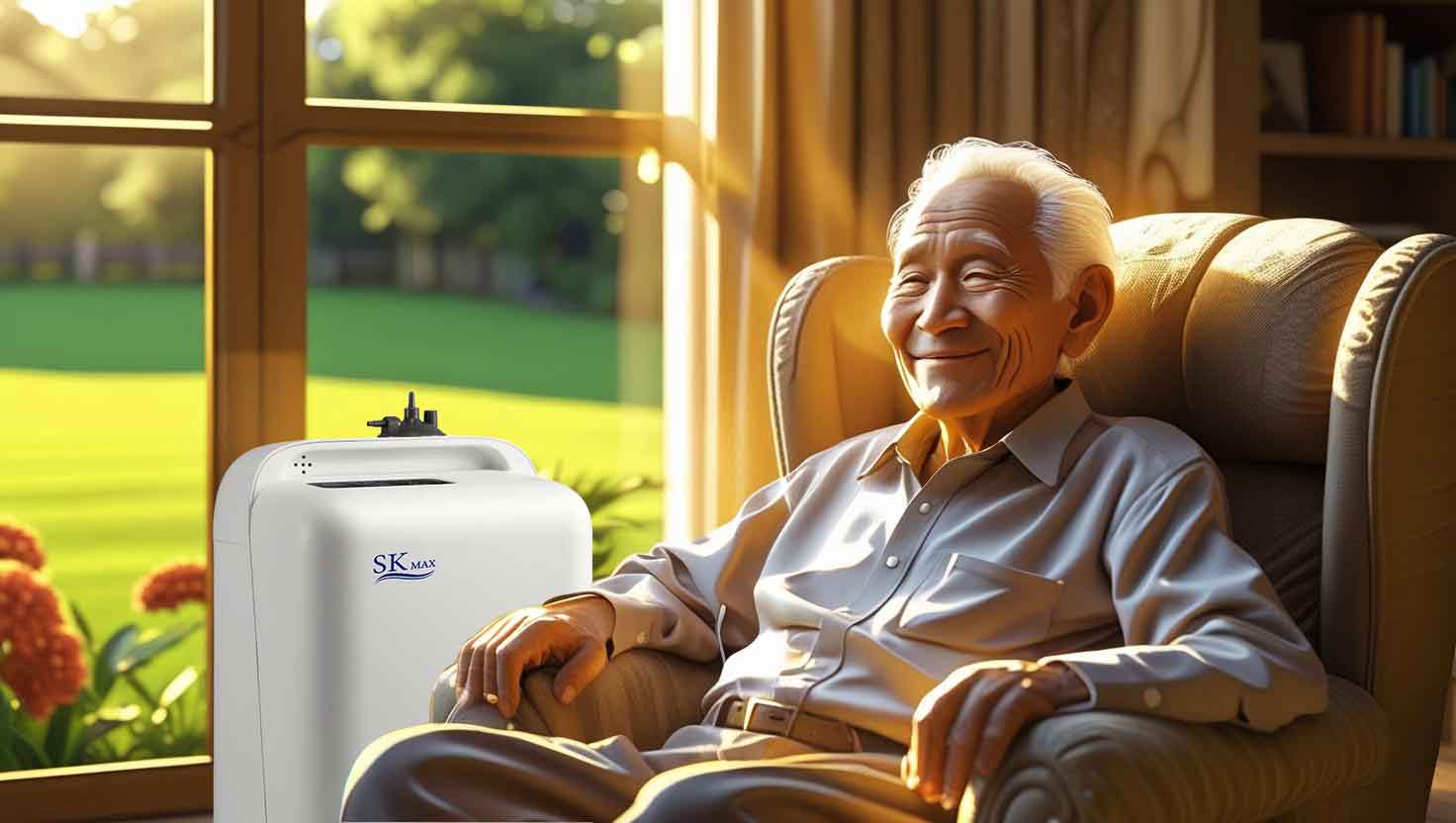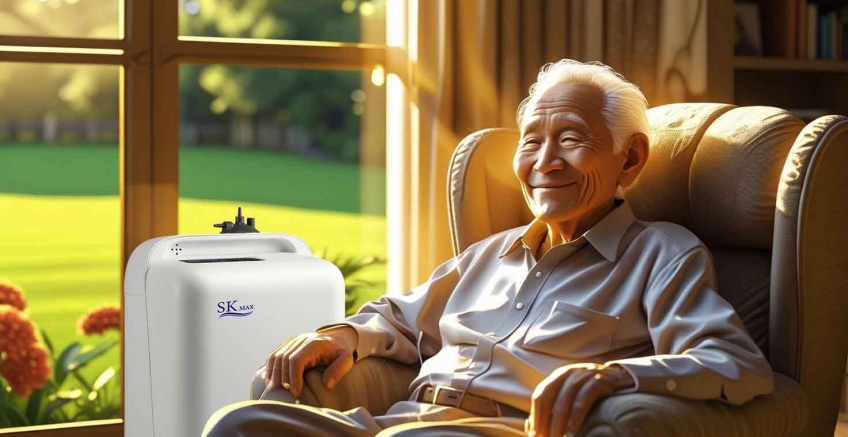A Guide to Choosing an Oxygen Concentrator for Home Use

An oxygen concentrator is an essential medical device for patients experiencing hypoxemia (low blood oxygen levels) or respiratory system disorders. Especially during home recovery periods, selecting an appropriate oxygen concentrator is crucial to ensure effective and safe patient care.
Key Considerations When Choosing an Oxygen Concentrator
Size and Oxygen Flow Rate
Oxygen concentrators come in various sizes, typically measured by oxygen flow rate in liters per minute (LPM). The device should be selected according to the patient’s oxygen requirements. For example, a flow rate of 3–6 LPM is suitable for patients with mild respiratory issues or elderly individuals. Meanwhile, 6–8 LPM devices are appropriate for patients requiring higher oxygen supplementation or those with tracheostomies.
Type of Device: Home Use vs. Portable
If the patient primarily remains at home, a stationary oxygen concentrator that can be plugged into a continuous power source is recommended. However, for patients who frequently travel or need mobility, a portable oxygen concentrator with compact size and ease of use is preferable.
Special Patient Needs
Some patients may require additional accessories such as humidifiers or nebulizers. It is important to consult with a healthcare provider to determine if these adjunct devices are necessary and to select an oxygen concentrator compatible with such requirements.
Budget and Long-Term Costs
Beyond the initial purchase price, consider ongoing expenses including electricity consumption, maintenance fees, accessory costs, and warranty coverage to plan a sustainable budget.
After-Sales Service
Choose brands or suppliers that offer reliable after-sales support to ensure prompt assistance and repair services if any issues arise with the device.
Precautions and Additional Recommendations
Always consult the attending physician before purchasing to assess the appropriate size and type of oxygen concentrator based on the patient’s clinical condition.
Thoroughly read and adhere to the user manual and manufacturer’s instructions.
If the patient experiences worsening respiratory distress or any abnormal symptoms during use, discontinue the device immediately and seek medical advice.
Conclusion
Selecting an oxygen concentrator for home use requires careful consideration of multiple factors including device size, type, special patient needs, budget, and after-sales service. Proper selection ensures that patients receive adequate oxygen therapy safely and effectively.
References
- "5 Things to Know Before Choosing an Oxygen Concentrator for Home Use," Alcotec International Company Limited
- Guidelines for Respiratory Therapy in Pediatrics. Accessed December 3, 2021, from http://www.thaipediatrics.org/Media/media-20161115132535.pdf
- BEFORE YOU BUY AN OXYGEN CONCENTRATOR. Accessed December 3, 2021, from https://www.amrita.edu/news/before-you-buy-oxygen-concentrator
- Oxygen Therapy. Accessed December 3, 2021, from https://www.pobpad.com/

